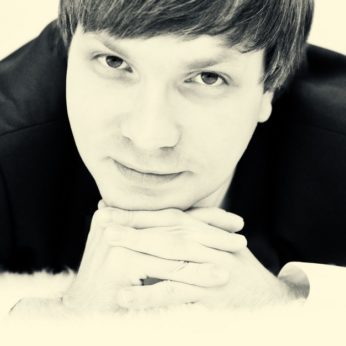Composer: Mieczyslaw Weinberg (b. 1919 - d. 1996)
Performance date: 06/07/2019
Venue: St. Brendan’s Church
Composition Year: 1947
Duration: 00:19:22
Recording Engineer: Gar Duffy, RTÉ
Instrumentation: vn, pf
Instrumentation Category:Duo
Artists:
Alexei Grynyuk -
[piano]
Marc Danel -
[violin]

Marc Danel [violin], Alexei Grynyuk [piano]
Mieczyslav Weinberg [1919-1996]
Violin Sonata No.4 Op.39 [1947]
1. Adagio
2. Allegro ma non troppo – Adagio tenuto molto rubato
3. Adagio primo
Weinberg was a prodigiously prolific composer writing 26 symphonies; seven concertos; 17 string quartets; 28 sonatas for various instruments; seven operas; several ballets; incidental music for 65 films; and a wide range of vocal and choral music including a Requiem – note the film music, which was the bread and butter income for many Soviet composers. After his escapes from the Nazis, first from Poland in 1939 and secondly from Minsk in 1941, he was evacuated to Tashkent. Weinberg had been brought up in his father’s Jewish theatre company so it was inevitable that he would meet the Mikhoels family, headed by the famous Jewish actor Solomon Mikhoels, whose daughter married Weinberg in 1942.
Weinberg’s life changed dramatically in 1943 when the score of his First Symphony found its way to Shostakovich, who instantly insisted that Weinberg come to Moscow. This led to a lifelong friendship and as Weinberg wrote: Shostakovich helped me with many things, some of which I am not even aware of myself….I considered myself to be a happy man, because I could show my works to the finest composer of the twentieth century. The two great composers were equal partners musically and there is no doubt the older composer helped Weinberg get his music performed.
This period from 1943 to 1947 was probably the happiest time in his life, he was recently married, had a baby daughter, his friendship with Shostakovich was blossoming and his music was being played. The Fourth Sonata opens with a gentle rising theme that is eventually picked up by the violin on its long-delayed entry. The subsequent music is stylistically so emancipated it is clearly the young composer out on his own. Distinctive is the beauty of the theme and the curious and hesitant step-like progression that suddenly erupts in bursts of aggression before returning to the prevailing mood of ecstatic contemplation.
The aggression is picked up in the next movement, which is a wild ride with a pounding piano and an unstoppable violin that concludes by taking off into a hair-raising cadenza. The Adagio primo is a return to the gentle questioning of the first movement concluding with quiet pizzicati.
Francis Humphrys
Copyright © 2025 West Cork Music. All rights reserved.
Designed and developed by Matrix Internet